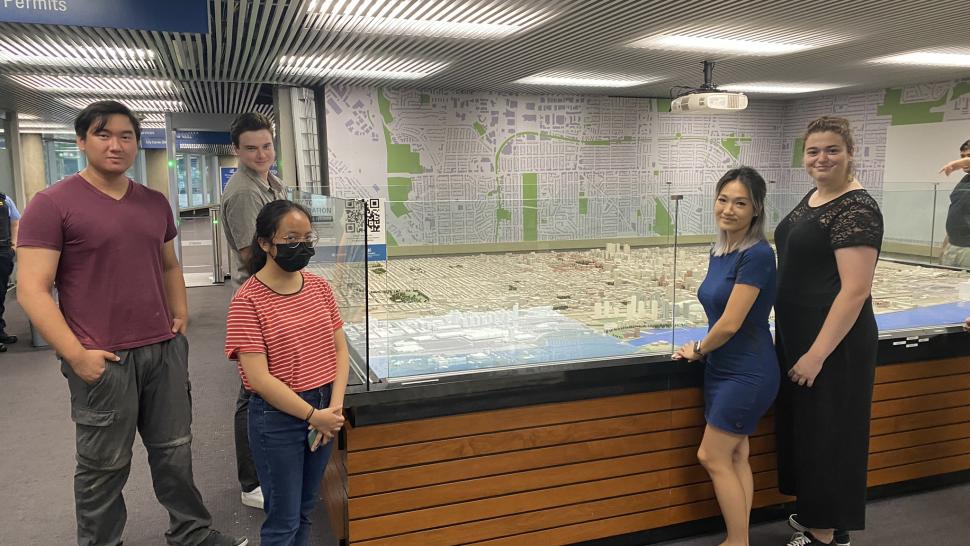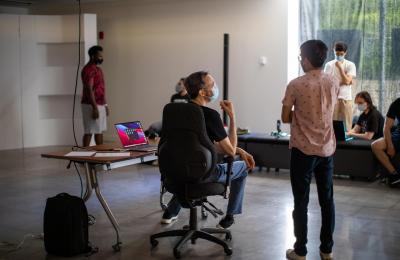
Over the course of the summer months, 45 Humber College students took part in six unique programs that explored real-world challenges and creative opportunities.
Kyla Ross, Project Manager for the Centre for Creative Business Innovation (CCBI) and Humber Galleries, noted that it’s a highly competitive process to secure a spot in one of Humber’s fellowships. This year, there were nearly 400 applications. Applicants had to craft a cover letter, include their portfolio, and go through an interview process.
Ross said there are numerous benefits to taking part in a fellowship. In addition to professional, paid opportunities, participants develop their portfolios, gain real-world experience, connect with and learn from peers in other programs, showcase their skills and build their network. Fellows and interns learn to negotiate ambiguity, communicate and understand collective goals while gaining insight into career-adjacent opportunities.
Developed by Humber’s CCBI and Humber Galleries, these inter-disciplinary fellowships run from May to August and have students working closely with industry partners on projects.
Interdisciplinary, collaborative work is the foundation of these fellowships. Participants come from a variety of programs across Humber, including Bachelor of Music, Game Programming, Advertising and Marketing Communications and Bachelor of Industrial Design.
Two projects involve the City of Toronto. Students in the Nuit Blanche Fellowship are designing an interactive and immersive work of art that will be unveiled to the public when Lakeshore Campus hosts Nuit Blanche as the first ever Etobicoke hub on October 1.

In the Tiny T.O. Internship, a team of students are using municipal databases, 3D printing, and augmented reality to update and reimagine the 30-year old model of Toronto currently on exhibition at City Hall.
Mai Nguyen recently graduated from Humber’s Bachelor of Industrial Design program and is interning with the Tiny T.O. project. Through the experience, Nguyen said she has developed her communication and networking skills and feels that these will benefit her in the future.
“Being a part of Tiny T.O. has greatly improved my problem-solving skills and has pushed me to manage various parts of the project,” said Nguyen. “Moving forward I can apply the valuable knowledge I’ve gained towards my career.”
With Culture’s Compass 2022 fellowship, issues of importance to the cultural sector were examined during a two-day virtual conference organized and hosted by students. With support from the City of Toronto and participation from panelists, performers, and artists, this event once again attracted an international audience.
A partnership with the Aga Khan Museum has students in the Intercultural and Creative Music Fellowship working collaboratively to both craft new music and develop a short film around intercultural understating.
The Indigenous Transmedia Fellowship was established for First Nations, Métis, and Inuit students (or international members of an Indigenous nation) to develop their skills in visual culture, digital media, and storytelling in collaboration with an Indigenous professional.
A partnership with the Asclepius Snakebite Foundation led to the Graphic Medicine Fellowship where Humber students worked with Biology students from Whitman College in the United States to create materials for clinics and communities in rural Africa. Snakebite envenoming has been recognized by the World Health Organization as a neglected tropical disease affecting millions.
This project has been funded in part by the Government of Canada’s Innovative Work-Integrated Learning program and CEWIL Canada’s iHUB.
Students interested in learning more or applying to future opportunities can visit the fellowship website.